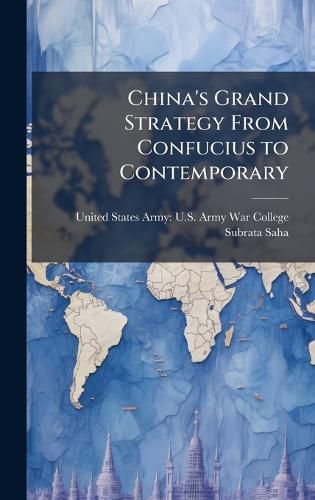Readings Newsletter
Become a Readings Member to make your shopping experience even easier.
Sign in or sign up for free!
You’re not far away from qualifying for FREE standard shipping within Australia
You’ve qualified for FREE standard shipping within Australia
The cart is loading…






Analysts and policy makers articulate growing concerns on whether China's rapid rise will remain peaceful or become confrontational. To understand Chinese grand strategy, this USAWC International Officer author draws on its long history and classical thinkers to offer four main arguments.
First, China is highly sensitive to its periphery (that is expanding), where it demands preeminence. Second, the measure of internal stability within China has major bearing on its strategic conduct. Third, traditional Chinese caution for strategic overreach is changing, as it projects interests in distant continents, albeit, with greater emphasis on diplomacy and trade. Fourth, reclaiming the status of a great power by rectifying the failings of initial encounters with the West is a dominant motive, in China's changing strategic calculus from national interest to international influence.
This work has been selected by scholars as being culturally important, and is part of the knowledge base of civilization as we know it. This work was reproduced from the original artifact, and remains as true to the original work as possible. Therefore, you will see the original copyright references, library stamps (as most of these works have been housed in our most important libraries around the world), and other notations in the work.
This work is in the public domain in the United States of America, and possibly other nations. Within the United States, you may freely copy and distribute this work, as no entity (individual or corporate) has a copyright on the body of the work.
As a reproduction of a historical artifact, this work may contain missing or blurred pages, poor pictures, errant marks, etc. Scholars believe, and we concur, that this work is important enough to be preserved, reproduced, and made generally available to the public. We appreciate your support of the preservation process, and thank you for being an important part of keeping this knowledge alive and relevant.
$9.00 standard shipping within Australia
FREE standard shipping within Australia for orders over $100.00
Express & International shipping calculated at checkout
Analysts and policy makers articulate growing concerns on whether China's rapid rise will remain peaceful or become confrontational. To understand Chinese grand strategy, this USAWC International Officer author draws on its long history and classical thinkers to offer four main arguments.
First, China is highly sensitive to its periphery (that is expanding), where it demands preeminence. Second, the measure of internal stability within China has major bearing on its strategic conduct. Third, traditional Chinese caution for strategic overreach is changing, as it projects interests in distant continents, albeit, with greater emphasis on diplomacy and trade. Fourth, reclaiming the status of a great power by rectifying the failings of initial encounters with the West is a dominant motive, in China's changing strategic calculus from national interest to international influence.
This work has been selected by scholars as being culturally important, and is part of the knowledge base of civilization as we know it. This work was reproduced from the original artifact, and remains as true to the original work as possible. Therefore, you will see the original copyright references, library stamps (as most of these works have been housed in our most important libraries around the world), and other notations in the work.
This work is in the public domain in the United States of America, and possibly other nations. Within the United States, you may freely copy and distribute this work, as no entity (individual or corporate) has a copyright on the body of the work.
As a reproduction of a historical artifact, this work may contain missing or blurred pages, poor pictures, errant marks, etc. Scholars believe, and we concur, that this work is important enough to be preserved, reproduced, and made generally available to the public. We appreciate your support of the preservation process, and thank you for being an important part of keeping this knowledge alive and relevant.